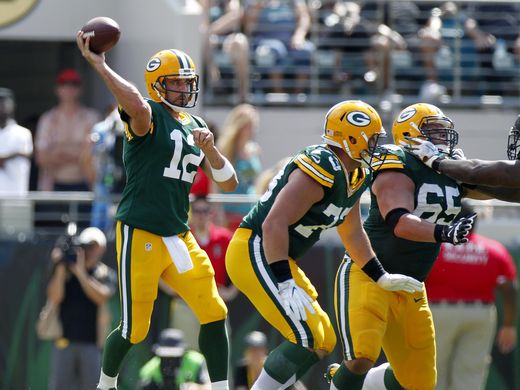The Green Bay Packers are looking for a bounce back season on offense in 2016 and the first game of the year showed some signs of life, but also some signs of the same issues that plagued them in 2015.
After scoring on the first drive of the season on a short field, due to an interception by inside linebacker Joe Thomas, the Packers bogged down with three consecutive three-and-outs that brought back memories of last season. Aaron Rodgers wasn’t on the same page with his receivers, Eddie Lacy could not find any running room and Davante Adams dropped a pass that would have went for a huge gain.
Mike McCarthy then decided to let Rodgers go to work and push the tempo with the result being 14 points in a span of under three minutes. That was most of Green Bay’s offense for the day, as the Packers only scored six second half points after bogging down in the red zone twice.
The Packers won this game because Rodgers can do things that other quarterbacks playing the position simply cannot do. He was much better than his 20-for-34, 199 yards and two touchdowns stat line suggests. He was in a good rhythm after the slow start and his accuracy seemed much more on target than most of the time last season.
The two touchdowns were on plays that maybe only Rodgers can make. Jordy Nelson’s first touchdown back was made possible by Rodgers executing perfect footwork inside the pocket for over five seconds before firing a laser to Nelson. The second will be on Rodgers’ highlight reel forever — a 29-yard touchdown pass to Davante Adams with Davon House in great coverage, not to mention one defender pulling down Rodgers from behind and another applying pressure in his face.
While these plays are amazing to watch, they’re not exactly sustainable offense as we saw last year. Rodgers can always bail the offense out with his miracles, but it can’t be relied upon. The two longest plays during the touchdown drives were a 17-yard swing out pass when Lacy bounced off a defender and a 30-yard pass interference penalty to Jared Cook. Rodgers only averaged 5.9 yards per attempt, which is not close to what the Packers need to be averaging and fall right in line with last season.
The Packers relied on the short passing game against Jacksonville with very little passes downfield and not a lot of separation downfield by receivers. The passes that were downfield were after Rodgers had moved out of the pocket and not within the confides of the offense. Nelson did not help in this area as expected with six catches for a measly 32 yards, although you can give him the obvious caveat of it being his first game back. Cook, who was also supposed to help threaten defenses deep down the seam, did not show up in Jacksonville. Green Bay once again did not seem to be using the middle of the field much and was just sticking to throws outside the numbers and in the flats.
There were positives for the offense with the offensive line giving Rodgers a lot of time to pass, albeit against a pedestrian Jaguars pass rush, and Lacy might not have looked much more in shape, but he certainly ran like he was. Adams, Randall Cobb and Richard Rodgers each made one tough catch that it seemed like they never came down with last season. However, the Packers won’t be the offense that we were hoping would return until Rodgers’ yards per pass attempt number goes up and they start threatening downfield.
——————Matt Bove is a writer at PackersTalk.com. PackersTalk.com. You can follow him on twitter at @RayRobert9.
——————


1 response to “The good and the bad from the Green Bay Packers’ offense in Jacksonville”
To not even try to hit Cook in the Middle of the field (and he was open) make me REALLY start to wonder if McCarthys offense will ever evolve.